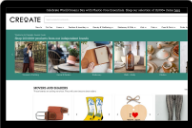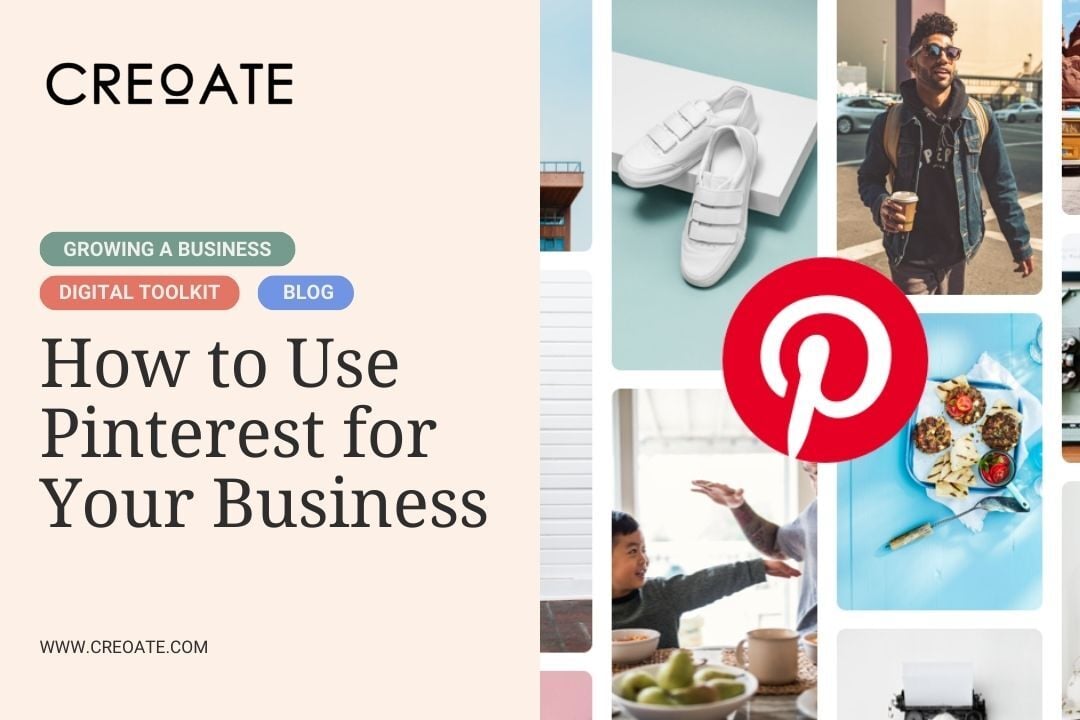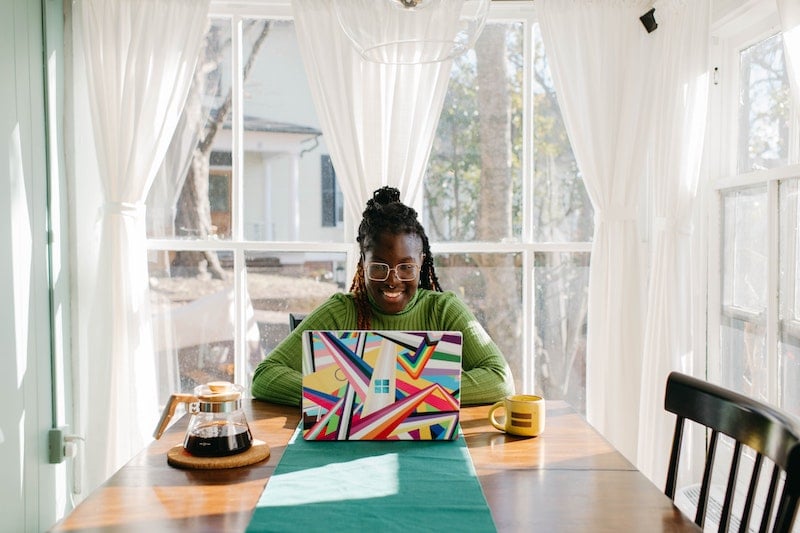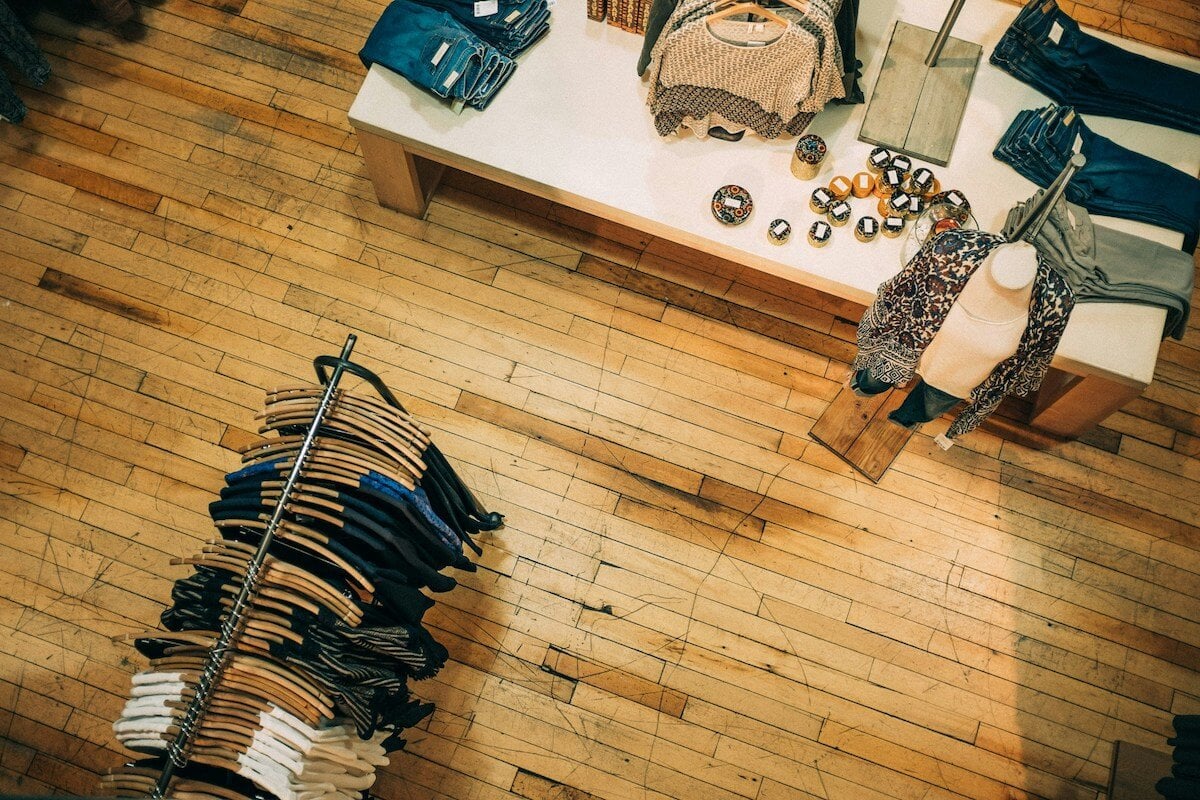In the past two years, window shopping has transformed to window scrolling — and then back again. With an ever-changing pandemic and discovery of optimised digital retail tools, businesses, local boutiques and Fortune 500’s alike, have turned to the web to provide online solutions to browsing through racks of clothing, shelves of books, and tables of other merchandise.
We gathered with the Creoate community for a webinar to discuss these mega-trends in shopping. Joined by a panel of five small business owners from across the globe, read up on key insights they’ve gathered on the front lines of the industry as they shift their shop’s presence from a street address to a web address, and vice versa.
On this page
- Understand the future of digital retail
- Leverage shifts in consumer behaviour
- Mimic online convenience in your store
- Remain consistent between online and physical presences
- Establish brand trust
Thank you so much to those that took part in this seminar, and to those that could not attend, catch up with the full recorded version below:
1. Understand the future of digital retail
The future is coming, and it’s coming fast. Some of the world’s largest brands are taking note, with Zara planning to invest over $2 billion in digital store solutions, and Lululemon introducing a BOPIS (buy online pay in store) model. On the small business level, this could mean keeping up with retail trends, implementing online platforms to aid in digital expansion, and listening to what your customers want out of their experience. The rise of online marketplaces such as Etsy, eBay, and Creoate have fueled this digital transformation, with perks like better product discovery, simplified shipping and logistics, convenience in price comparison, and exposure to a larger audience.
As for Aleesha from El Cambio Logico, a family-run, Barcelona-based sustainable shop, her success with Creoate came from the ability to have trial runs of larger quantities of product with free delivery and returns of unsold stock within 60 days. Her store reached a point of growth where she needed to find and test out new brands for her customers in a more efficient manner. Having worked with distributors in the past, she wanted to move away from small quantities of product with hassle attached.
“We were able to use platforms like Creoate to be able to find other brands that people were looking for and try more things when our online shop started to boom more than usual,” Aleesha said.
2. Leverage shifts in consumer behaviour
While COVID-19 devastated marketplaces across the globe, it also gave way to some of retail’s greatest revolutions. The pandemic impacted how consumers go about discovering products, seeking shopping assistance, and their expectations of post-sales support. Today, the strongest drivers of new brand purchases currently are availability, convenience, and value, as well as a newfound focus on the environmental impact of products bought.
Scale and adjust these expectations to your store’s needs, and keep them in mind when planning your shipping, return policies, and customer service. Heather from the Gold Trout, a lifestyle boutique in Granville, New York, discussed with the panel how Creoate’s marketplace has replaced the need for her to attend trade shows to search for new products so that she can invest that time into her customers instead. Having driven over 700 miles the day before Christmas in 2020 just to make sure all her customer’s packages got delivered, she understands her consumers’ expectations and folds them into her business practices.
“We really lean into that service piece and the thing that ties the whole conversation today together being about expectations of a brand,” Heather said. “In the same way that our individual customers’ experiences online have shifted, so have retailer’s experiences. I haven’t personally been to a gift show since 2016, so we’re really looking to not have to invest that time and energy into discovery and I think that the [digital] marketplace just really facilitates that.”
3. Mimic online convenience in your store
Similar to stores turning in-store features digital, (like try on videos, size estimation tools, and chat bots), the return back to a sense of normality has created the reverse need: to enrich an in-person retail experience with benefits previously only found on an ecommerce site. Where does that leave us? In a hybrid state, taking what we learned from online consumers and mimicking physical experiences.
In a digital space, algorithms help form curated personal shopping experiences, whether that’s through emails based on purchase history or suggested items to add to the cart. A key way to offer this in-store is by helping customers get quick assistance or advice on what to buy. Additionally, infuse ease into their purchase journey with quick and easy payment options and service (to replace programs such as AfterPay), or hassle-free and methodical shopping returns (with services like click and collect).
At the Black Orchid in the Scottish Highlands, shop owner Kim has placed an emphasis on adding a dose of her website’s “click convenience” into her in-store gift shop. She uses social media to promote new products in store, and then has a table at the front of the shop featuring those same “as seen on Instagram” products, so it’s the first thing someone sees when they step foot inside. To match the benefit of a “related products” tool on a website, she also cross sells by placing carefully arranged collections of suggested items together at different store displays.
4. Remain consistent between online and physical presences
Branding elements such as store logos, colour schemes, and even mission statements don’t just have to be stuck in the “about” section of your website. Incorporate them everywhere your brand is, from the stickers at your checkout table to your door mat, to promote recognition of your retail space between it’s digital, physical, and social media platforms.
Superb customer service doesn’t have to end where the brick and mortar walls of your store do. The goal behind the Happydashery in Leighton Buzzard, UK is to sell “little bits of happy” from independent makers and designers, and this sprinkle of joy also comes in the form of making sure online customers have just as attentive of service as they would in-person. By offering gift wrapping and hand written, personalised cards to send out to loved ones, they carry their brand’s values through both an iPhone screen and a shop window.
“Whether they’re coming into the shop or shopping with us online, it’s about making sure they’ve got that in store experience where they’re not just a nameless customer online,” Sarah from the Happydashery said. “Have that conversation with them and make sure that they’re seen with value and they’re buying into your brand and service,”
All of El Cambio Logico’s products are heavily tied to their brand’s ethos of being eco-friendly. Because they put extra attention toward working in store with customers to explain their products, they’ve placed descriptions online of how you care for each item, how to dispose of it, and it’s full life cycle.
“Nothing can really beat the experience of being able to talk to the customer in person. That’s something that helped our store survive when others were closing,” Ayesha said. “However, all of the information you could get from us verbally in store, we’ve tried to put online.”
5. Establish brand trust
In today’s market climate of impatience and abundance of choice, what matters most is if and how you keep your promises to your customers. As a small business, show them that they’re at the heart of everything you do, and that even though the retail landscape is moving in a hyper-digital direction, every single order is appreciated — it all counts. At the Gold Trout, Heather believes that the more retailers can do to cement a personal, human connection to a brand, the better off both parties will be.
“Amazon is never going to call you, but customers prefer a call so they’re not just treated as some anonymous person on the other end of this online transaction,” Heather said. “People shop at small stores online because they value small stores online, whether it’s in Barcelona or the Scottish Highlands. And people appreciate that personal service.”
The digital renaissance has touched nearly every corner of industry, and retail certainly has seen the impact. Whether it’s optimizing your site’s suggestion algorithm or simply adding that ‘extra little something’ to a package delivery box, giving an equally enhanced experience to in-store and online customers is paramount. How do you feel about the “hybrid hype” and these changes to retail? Let us know in the comments below.
Not registered with CREOATE yet? Sign up now and shop wholesale with us today.
Read More Articles:
- Top 6 Window Display Ideas
- What is RRP?
- What is an EORI Number?
- 11 Shopfront Signage Ideas
- 11 Best Scandi Wholesale Homeware
- 12 Best Quirky Wholesale Homeware Brands
Browse Popular Categories at CREOATE: Wholesale Jewellery | Wholesale Gifts | Wholesale Stationery | Wholesale Beauty Products | Wholesale Mugs | Wholesale Homeware | Wholesale Pet Supplies | Wholesale Gourmet Food | Wholesale Garden & Outdoor | Wholesale Baby & Kids Products








